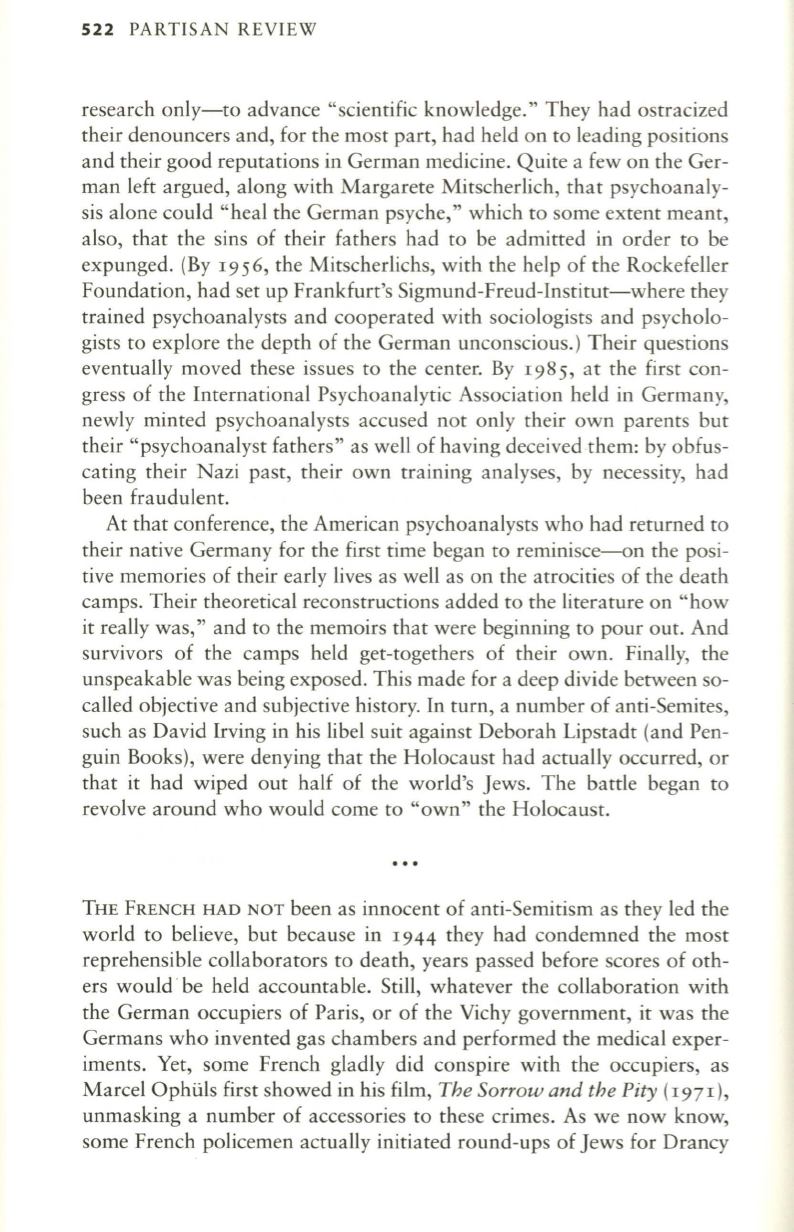
522
PARTISAN REVIEW
research only-to advance "scientific knowledge." They had ostracized
their denouncers and, for the most part, had held on to leading positions
and their good reputations in German medicine. Quite a few on the Ger–
man left argued, along with Margarete Mitscherlich, that psychoanaly–
sis alone could "heal the German psyche," which to some extent meant,
also, that the sins of their fathers had to be admitted in order to be
expunged. (By
1956,
the Mitscherlichs, with the help of the Rockefeller
Foundation, had set up Frankfurt's Sigmund-Freud-Institut-where they
trained psychoanalysts and cooperated with sociologists and psycholo–
gists to explore the depth of the German unconscious.) Their questions
eventually moved these issues to the center. By
1985,
at the first con–
gress of the International Psychoanalytic Association held in Germany,
newly minted psychoanalysts accused not only their own parents but
their "psychoanalyst fathers" as well of having deceived them: by obfus–
cating their Nazi past, their own training analyses, by necessity, had
been fraudulent.
At that conference, the American psychoanalysts who had returned to
their native Germany for the first time began to reminisce-on the posi–
tive memories of their early lives as well as on the atrocities of the death
camps. Their theoretical reconstructions added to the literature on "how
it really was," and to the memoirs that were beginning to pour out. And
survivors of the camps held get-togethers of their own. Finally, the
unspeakable was being exposed. This made for a deep divide between so–
called objective and subjective history. In turn, a number of anti-Semites,
such as David Irving in his libel suit against Deborah Lipstadt (and Pen–
guin Books), were denying that the Holocaust had actually occurred, or
that it had wiped out half of the world's Jews. The battle began to
revolve around who would come to "own" the Holocaust.
THE FRENCH HAD NOT been as innocent of anti-Semitism as they led the
world to believe, but because in
1944
they had condemned the most
reprehensible collaborators to death, years passed before scores of oth–
ers would ·be held accountable. Still, whatever the collaboration with
the German occupiers of Paris, or of the Vichy government, it was the
Germans who invented gas chambers and performed the medical exper–
iments. Yet, some French gladly did conspire with the occupiers, as
Marcel Ophiils first showed in his film,
The Sorrow and the Pity
(1971),
unmasking a number of accessories to these crimes. As we now know,
some French policemen actually initiated round-ups of Jews for Drancy


